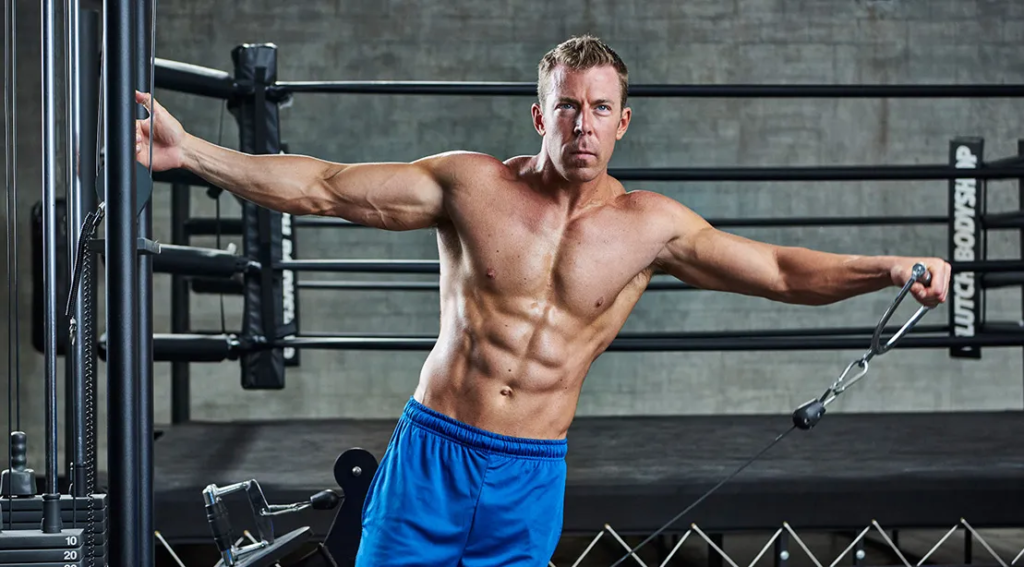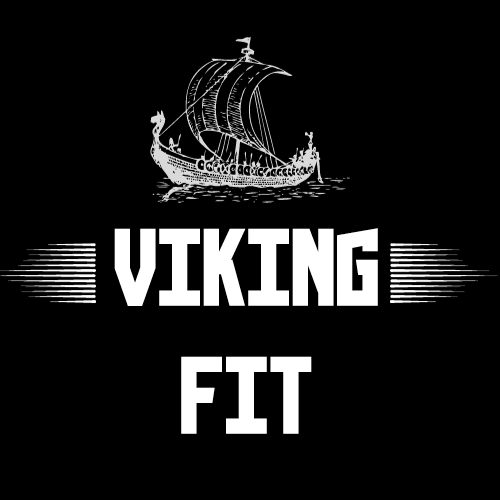“Discover the best cable shoulder workouts to build strong, sculpted shoulders. Learn proper techniques, advanced exercises, and tips for maximizing your shoulder gains. Perfect for all fitness levels!
Table of Contents
Cable Shoulder Workouts: The Ultimate Guide for Sculpted Shoulders
Strong, well-defined shoulders are a hallmark of a balanced and powerful physique. Cable shoulder workouts offer a versatile and effective way to target all three heads of the deltoids—anterior, medial, and posterior—while also engaging the stabilizing muscles. In this guide, we’ll cover the best cable shoulder exercises, how to perform them correctly, and tips for incorporating them into your routine.
Why Choose Cable Shoulder Workouts?
Cables provide constant tension throughout the entire range of motion, which can lead to more effective muscle activation and growth. Unlike free weights, cables allow for smoother, controlled movements, reducing the risk of injury and enhancing muscle engagement.
Benefits of Cable Shoulder Workouts
- Constant Tension: Unlike free weights, cables maintain continuous tension on the muscles throughout the entire range of motion, which can lead to better muscle activation and growth.
- Versatility: Cable machines offer a wide range of exercises and variations, allowing you to target your shoulders from different angles.
- Stability and Balance: Using cables can improve your shoulder stability and balance, as they require more control compared to free weights.
- Reduced Injury Risk: The controlled nature of cable movements reduces the risk of injury, making them suitable for all fitness levels.
- Isolation: Cables allow for precise targeting of specific muscle heads, enabling a more focused workout.
Anatomy of the Shoulder Muscles
Understanding the anatomy of the shoulder muscles can help you effectively target them during your workouts. The shoulder is primarily composed of three heads of the deltoid muscle:
- Anterior Deltoid: Located at the front of the shoulder, this muscle is responsible for shoulder flexion and internal rotation.
- Medial Deltoid: Positioned at the side of the shoulder, it is crucial for shoulder abduction and lateral movements.
- Posterior Deltoid: Found at the back of the shoulder, this muscle assists with shoulder extension and external rotation.
In addition to the deltoids, shoulder workouts also engage the trapezius, rhomboids, and rotator cuff muscles, which contribute to shoulder stability and movement
Top Cable Shoulder Exercises
1. Cable Front Raises
Target Muscle: Anterior deltoid
How to Perform:
- Attach a single handle to the low pulley of a cable machine.
- Stand with feet shoulder-width apart, facing away from the machine.
- Grab the handle with an overhand grip, palm facing down.
- Keeping your arm straight, raise the handle in front of you until it reaches shoulder height.
- Slowly lower it back to the starting position.
Tips:
- Avoid swinging the weight; use a controlled motion.
- Keep your core engaged to maintain stability
2. Cable Lateral Raises
Target Muscle: Medial deltoid
How to Perform:
- Attach a single handle to the low pulley of a cable machine.
- Stand with your side to the machine, holding the handle with your outside hand.
- With a slight bend in your elbow, lift the handle out to the side until your arm is parallel to the floor.
- Slowly lower it back to the starting position.
Tips:
- Focus on lifting with your shoulder, not your hand.
- Keep the motion smooth and controlled.
3. Cable Rear Delt Flyes
Target Muscle: Posterior deltoid
How to Perform:
- Set the pulleys at shoulder height and attach single handles.
- Stand between the pulleys and grab the left handle with your right hand and the right handle with your left hand.
- With a slight bend in your elbows, pull the handles outward and backward until your arms are in line with your shoulders.
- Slowly return to the starting position.
Tips:
- Squeeze your shoulder blades together at the top of the movement.
- Maintain a slight bend in your elbows throughout the exercise.
4. Cable Shoulder Press
Target Muscle: Anterior and medial deltoid
How to Perform:
- Attach handles to the low pulleys on both sides of the machine.
- Stand in the middle and grab the handles, bringing them to shoulder height with elbows bent.
- Press the handles upward until your arms are fully extended above your head.
- Slowly lower back to the starting position.
Tips:
- Keep your movements controlled to avoid using momentum.
- Engage your core to support your lower back
5. Cable Upright Rows
Target Muscle: Deltoids and upper traps
How to Perform:
- Attach a straight bar to the low pulley.
- Stand facing the machine, feet shoulder-width apart.
- Grasp the bar with an overhand grip, hands closer than shoulder-width apart.
- Pull the bar up along your body to chest level, keeping your elbows higher than your hands.
- Slowly lower back to the starting position.
Tips:
- Keep your back straight and avoid leaning forward.
- Lift with your elbows leading the movement
6. Cable Face Pulls
Target Muscle: Posterior deltoid and upper back
How to Perform:
- Attach a rope handle to a high pulley.
- Stand facing the machine, feet shoulder-width apart.
- Grab the handles with an overhand grip, palms facing down.
- Pull the handles towards your face, flaring your elbows out to the sides.
- Squeeze your shoulder blades together at the peak of the movement.
- Slowly return to the starting position.
Tips:
- Keep your upper arms parallel to the floor throughout the movement.
- Focus on squeezing the shoulder blades together.
7. Cable Front Shoulder Press
Target Muscle: Anterior deltoid
How to Perform:
- Attach a straight bar to a low pulley.
- Sit on a bench facing away from the machine.
- Grab the bar with an overhand grip, bringing it to shoulder height.
- Press the bar overhead until your arms are fully extended.
- Slowly lower back to the starting position.
Tips:
- Keep your core tight to support your lower back.
- Avoid locking your elbows at the top to maintain tension on the muscles.
8. Cable Y-Raises
Target Muscle: Upper traps and deltoids
How to Perform:
- Attach handles to the low pulleys on both sides of the machine.
- Stand in the middle and grab the handles with an overhand grip.
- Lift the handles up and out to form a Y shape with your body.
- Slowly lower back to the starting position.
Tips:
- Focus on lifting with your shoulders and traps.
- Keep your movements controlled to avoid swinging.
Incorporating Cable Shoulder Workouts into Your Routine
To maximize your shoulder development, consider incorporating cable exercises into a balanced workout routine. Here’s an example of how to structure your shoulder workout:
Example Shoulder Workout:
- Warm-Up: 5-10 minutes of light cardio and dynamic stretching
- Cable Front Raises: 3 sets of 12-15 reps
- Cable Lateral Raises: 3 sets of 12-15 reps
- Cable Rear Delt Flyes: 3 sets of 12-15 reps
- Cable Shoulder Press: 3 sets of 10-12 reps
- Cable Upright Rows: 3 sets of 10-12 reps
- Cable Face Pulls: 3 sets of 12-15 reps
- Cable Y-Raises: 3 sets of 10-12 reps
Tips for Success:
- Progressive Overload: Gradually increase the weight or the number of repetitions to continuously challenge your muscles and stimulate growth.
- Proper Nutrition: Ensure you consume adequate protein and overall calories to support muscle recovery and growth. Aim for 1.2 to 2.2 grams of protein per kilogram of body weight.
- Rest and Recovery: Allow sufficient time for your muscles to recover between workouts. Overworking the shoulders without proper rest can lead to injury and impede progress.
- Consistent Form: Focus on maintaining proper form to maximize muscle engagement and minimize the risk of injury. Regularly check your technique and make adjustments as needed.
Advanced Cable Shoulder Exercises
Once you’ve mastered the basic cable shoulder exercises, you can incorporate more advanced movements to continue challenging your muscles and promoting growth. Here are a few advanced cable shoulder exercises to try:
1. Single-Arm Cable Lateral Raise
Target Muscle: Medial deltoid
How to Perform:
- Attach a single handle to the low pulley of a cable machine.
- Stand sideways to the machine, holding the handle with your outside hand.
- With a slight bend in your elbow, lift the handle out to the side until your arm is parallel to the floor.
- Slowly lower it back to the starting position.
Tips:
- Perform the exercise one arm at a time to focus on unilateral strength and muscle symmetry.
- Maintain a slow and controlled movement to maximize tension.

2. Cable External Rotations
Target Muscle: Rotator cuff
How to Perform:
- Attach a single handle to the low pulley of a cable machine.
- Stand sideways to the machine, holding the handle with your inside hand.
- Keep your elbow bent at 90 degrees and your upper arm close to your body.
- Rotate your forearm away from your body, keeping your elbow fixed.
- Slowly return to the starting position.
Tips:
- Use light weight to avoid straining the rotator cuff muscles.
- Focus on a controlled movement to engage the stabilizing muscles.

3. Cable Rear Delt Pulls
Target Muscle: Posterior deltoid and upper back
How to Perform:
- Attach a straight bar to the low pulley.
- Stand facing the machine, feet shoulder-width apart.
- Grab the bar with an overhand grip, hands slightly wider than shoulder-width apart.
- Pull the bar towards your face, keeping your elbows high.
- Squeeze your shoulder blades together at the top of the movement.
- Slowly return to the starting position.
Tips:
- Keep your upper arms parallel to the floor throughout the movement.
- Focus on squeezing the shoulder blades together.

Common Mistakes to Avoid
When performing cable shoulder workouts, it’s essential to maintain proper form to avoid injury and ensure effective muscle engagement. Here are some common mistakes to watch out for:
- Using Too Much Weight: Lifting too heavy can compromise your form and increase the risk of injury. Start with a manageable weight and gradually increase it as you build strength.
- Swinging the Weight: Using momentum to lift the weight reduces muscle engagement. Focus on controlled, deliberate movements.
- Incorrect Hand Position: Ensure your hands are in the correct position for each exercise to target the intended muscles effectively.
- Neglecting Warm-Up: Skipping the warm-up can lead to injury. Always start with a proper warm-up to prepare your muscles for the workout.
- Ignoring Form: Prioritize form over weight to maximize muscle activation and prevent injury. Regularly check your technique and make adjustments as needed.
Conclusion
Cable shoulder workouts offer an unparalleled method for developing strong, sculpted shoulders. With their ability to provide constant tension and a controlled range of motion, cables are an invaluable tool for targeting all three heads of the deltoids: anterior, medial, and posterior. Whether you are a beginner or an advanced lifter, incorporating cable exercises into your shoulder routine can lead to significant improvements in muscle definition, strength, and overall shoulder health.
By consistently performing exercises like cable front raises, lateral raises, rear delt flyes, shoulder presses, and upright rows, you can achieve a balanced and comprehensive shoulder workout. Additionally, advanced movements such as single-arm lateral raises, cable external rotations, and rear delt pulls can further enhance your training regimen, ensuring continued progress and muscle development.
Remember to prioritize proper form and controlled movements, gradually increase the resistance to apply progressive overload, and allow adequate recovery time for your muscles. These practices will help you maximize the effectiveness of your cable shoulder workouts and minimize the risk of injury.
With dedication and consistency, you can transform your shoulder training and achieve the strong, sculpted shoulders you desire. So, add these cable exercises to your workout routine, stay committed, and watch your shoulders transform. Happy lifting! i recommended you Top 6 long head triceps exercises
Summary and Key Points
- Cable Shoulder Workouts provide constant tension, versatility, and reduced injury risk.
- Key Exercises: Cable front raises, lateral raises, rear delt flyes, shoulder press, upright rows, face pulls, and Y-raises.
- Tips for Success: Warm-up, progressive overload, proper nutrition, rest, and consistent form.
- Advanced Movements: Single-arm lateral raise, external rotations, rear delt pulls.
- Common Mistakes: Using too much weight, swinging, incorrect hand position, neglecting warm-up, and ignoring form.
By following these guidelines and incorporating these exercises into your routine, you will be well on your way to achieving well-defined and powerful shoulders. The Ultimate Guide to Lateral Head Triceps Exercises





Pingback: Top 10 Lower Trap Exercises For A Stronger Upper Back - Vikingfit22.com